
|
An Interview-Based Survey to Investigate the Occurrence of Swinhoe's Giant Softshell Turtle (Rafetus swinhoei) in Huaphanh Province of Northern Lao PDR
Swinhoe’s Giant Softshell Turtle (Rafetus swinhoei) is considered the most critically endangered chelonian in the world. A combination of chronic over-harvesting, wetland destruction, construction of hydropower dams, widespread water pollution, and the development, sedimentation, and flooding of riverside sandbanks (critical nesting habitat) has pushed R. swinhoei to the brink of extinction. The current global population, including captive individuals and unconfirmed reports of wild turtles, is thought to consist of 10-20 adults, although this figure is could be significantly inflated as most reports of Rafetus swinhoei remain unconfirmed. With Rafetus swinhoei now tottering at the edge of the extinction abyss, finding new individuals in the wild is critical for the survival of this species. To this end, we conducted an interview-based survey in villages along the Xam, Et, and Ma rivers in Huaphanh Province of northern Lao PDR during March-April 2023. We interviewed 251 people in 49 towns and villages along the Et, Ma and Xam rivers during our survey. Our interview data indicates that a species of large softshell turtle – most likely Rafetus swinhoei – formerly occurred in the Xam and Ma Rivers. The most recent credible reports date to the 1990s and early 2000s (last reported in 2007), although the majority of encounters occurred prior to 1990. Without additional corroborating evidence, more recent literature reports from Laos cannot be accepted as credible. Given the lack of recent credible reports, coupled with widespread and intense harvesting pressure, we consider it near-certain that R. swinhoei has been extirpated in the Xam and Ma rivers within Laos. We attribute the extirpation of R. swinhoei in Laos to chronic over-harvesting (both targeted and opportunistic) of turtles. Although we cannot rule out the possibility that one or two R. swinhoei survive in the Xam or Ma Rivers, the ability of a large softshell turtle to remain undetected in a landscape of high human occupancy is doubtful. Our survey also documented the occurrence of Palea steindachneri (Critically Endangered) in the region, complementing a single earlier record from Huaphanh Province. Local ecological knowledge obtained during our interviews adds significantly to our understanding of the reproductive biology of P. steindachneri. Our survey also confirmed that softshell turtles are subject to ongoing, intense harvesting pressure, largely as a result of opportunistic capture incidental to fishing. Without exception, those persons we interviewed stated that softshell turtles were significantly more abundant in the past, suggesting widespread population declines have occurred. Population declines of softshell turtles (and other wildlife) are probably being driven by unchecked, transboundary wildlife trafficking in which wildlife harvested in Laos is illegally smuggled into Vietnam. We conclude by recommending continued survey effort on rivers and reservoirs of the Red River Drainage in northern Laos in hopes of locating surviving R. swinhoei.
|

|
An Expedition into Central Rakhine State, Myanmar. A Report to Wildlife Conservation Society
This report summarizes the results of a Wildlife Conservation Society expedition
into central Rakhine State, Myanmar, conducted from 21 January to 14 February 2000. Rakhine State (formerly known as "Arakan") encompasses much of the Arakan Yoma Hill range, one of the most rugged and sparsely populated regions in mainland Southeast Asia. The primary objective of this expedition was to gather data on the conservation status and ecology of the Arakan forest turtle (Geoemyda depressa), considered one of the world's rarest living chelonians. Geoemyda depressa is known from only seven specimens; five were collected from 1875 to 1908 in Rak.hine State, presumably from the Arakan Yoma Hills. However, all specimens lack specific locality data. In 1994, two additional specimens were purchased alive in Yunnan Province, China after being imported for local food markets. Virtually nothing is known concerning the ecology, habitat preference, or population status of G. depressa, which is currently classified as Critically Endangered on the 1996 TUCN Red List of Threatened Animals. During our expedition we obtained 16 shells and one living G. depressa from villagers. These confirm the existence of G. depressa in the Arakan Yoma Hills and are the first specimens with specific locality data. Geoemyda depressa occurs in evergreen, deciduous, and bamboo forests throughout the region. We accompanied hunters to seven sites where G. depressa were captured during the past year. These sites were generally in evergreen forest or bamboo and associated with small streams. However, one site was located in deciduous forest along the coast and another was in a sugarcane field. Observations by hunters of feeding turtles indicate the diet is largely composed of fruit, leafy vegetation, and shoots. Geoemyda depressa is exploited for meat and plastrons in central Rakhine. The meat is consumed locally and plastrons are sold to traders for eventual export to China. Some adult turtles are also exported alive to food markets in southern China via Mandalay. The number of G. depressa taken by individual hunters appears low. Hunters regard G. depressa as rare, although whether this reflects actual rarity or cryptic behavior remains unknown. Most G. depressa are captured using trained dogs, but limited numbers are collected by fire hunting and nocturnal searching using headlamps. Despite the paucity of records, the current TUCN classification of G. depressa as Critically Endangered is probably unwarranted. Market demand is low, the harvest appears minimal, existing habitat is extensive and under no immediate threat, and the human population density in Rakhine State is among the lowest in Southeast Asia. However, caution is urged as G. depressa may become threatened by changing market demands when stocks of other turtles are depleted. Furthermore, proposals to construct a paper mill in Rak.hine State based on the large-scale harvesting of Melocanna bambusoides could negatively impact G. depressa populations. We also documented the existence of an extensive commercial harvest of other turtles in central Rakhine State. The yellow tortoise (lndotestudo elongata) is the primary target of hunters and harvested principally for its plastron. The regional harvest remains unquantified, but large numbers are apparently being collected. Some hunters reported capturing as many as 300 tortoises each year. Jndotestudo elongata was formerly harvested on a subsistence basis that was probably sustainable given the low human population of the region. However, commercial demands from markets in southern China now threaten the continued viability of tortoise populations. In addition to elongata, large numbers of Asian leaf turtles (Cyclemys dentata) and lesser quantities of Asian brown tortoises (Manouria emys) and keeled box turtles (Pyxidea mouhotii) are also being harvested at levels that are probably unsustainable. Marine turtles nest at a number of sites on Ramree Island, but remain subject to egg harvest and incidental drowning in fishing nets. Interviews with egg dealers suggest nesting populations of green turtles (Chelonia mydas) have been declining for many years. We also documented the probable occurrence of estuarine terrapins (Batagur baska) on the coastal mainland. The status of the estuarine crocodile (Crocodylus porosus) was investigated in central Rakhine and Ramree Island. Although formerly abundant in coastal habitats, it appears that crocodile populations are now reduced to scattered individuals. Population declines are attributed to chronic over-harvesting. While on Ramree Island we investigated the alleged massacre of nearly 1000 Japanese soldiers by crocodiles during World War ll. The massacre supposedly occurred when Allied Forces invaded the island during 1945. The Japanese withdrew into the mangrove swamps separating Ramree Island from the mainland and allegedly fell victim to repeated crocodile attacks. This incident has been uncritically accepted by later writers without adequate investigation. Our interviews with long-term residents of Ramree Island and a subsequent examination of historical sources found no evidence that such a massacre ever occurred. Incidental to our investigations of turtles and crocodiles, we gathered data on the status of large mammals in central Rakhine. Tigers (Panthera tigris) are extremely rare and probably approaching extinction in the Arakan Y oma Hills. A single set of elephant (Elephas maximus) tracks was found. According to villagers elephants rarely occur in the area we visited, but are common elsewhere in the Arakan Yomas. Gaur (Bos gaurus) remain common in the region and we encountered numerous tracks and well-used trails, and noted extensive browsing in abandoned taungya fields. Gaur are hunted for meat and horns, which are sold to traders for export to Thailand and China. The occurrence of sambar deer (Cervus unico/or) and barking deer (Muntiacus muntjak) was documented. The former is considered rare, while the latter are common. Other mammals we recorded include wild pigs (Sus scrofa), bear (probably Helarctus malayanus), binturong (Arctictis binturong),jackals (Canis aureus), and three species of primate. In conclusion, this expedition and other studies indicate that large numbers of turtles and tortoises are being exported illegally from Myanmar into China. This trade undoubtedly threatens the continued viability of chelonian populations in many regions of Myanmar. Therefore, it is absolutely essential that authorities in Myanmar and China cooperate to drastically reduce harvest levels. As long as the wildlife markets in southern China continue to operate, turtle hunting will remain a lucrative economic proposition for the rural inhabitants of Myanmar. Without rapid implementation of protective measures, continued population declines can be expected and many species may become critically endangered within the next 10 years. Furthermore, additional field surveys to determine the distribution and status of Geoemyda depressa elsewhere in Myanmar are warranted. Priority areas for investigation include the southern Arakan Yoma Hills, Chin Hills, and suitable habitat in Kayah State. Additionally, we recommend initiating an ex-situ conservation program for Geoemyda depressa at the Yangon Zoo and facilities in the United States. Finally, crocodile and turtle surveys should be conducted in extreme western Rakhine State north of Sittwe. This area is poorly known biologically and may harbor remnant populations of gharial (Gavialis gangeticus). Gavialis gangeticus has been reported from the Kaladan River, although the basis of these records is unclear. Gavial is gangeticus still occurs in neighboring Bangladesh, and could potentially survive in Myanmar.
|

|
Siamese Crocodile Crocodylus siamensis
|
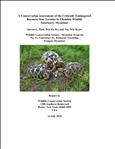
|
A Conservation Assessment of the Critically Endangered Burmese Star Tortoise in Chatthin Wildlife Sanctuary, Myanmar
|

|
The Myanmar Elephant Conservation Action Plan (MECAP), 2018-202
While Myanmar’s wild elephant population is relatively small at maybe 2000 individuals, a great deal of elephant habitat remains in the country. There is, therefore, a great opportunity for the country’s wild elephant population to grow very significantly and become perhaps the largest in Southeast Asia—provided Myanmar’s elephants and elephant habitat are well protected and managed wisely. Myanmar also has a long and proud history of managing elephants in captivity as working animals and has therefore a vast repository of knowledge about captive elephant husbandry. Finally, Myanmar is in the unique position of having many more captive elephants (some 5000) than wild elephants and this brings both challenges and opportunities. For example, some of Myanmar’s captive elephants are thought to be suitable for experimental reintroduction back into the wild and Myanmar could become a world leader in such ‘re-wilding’.
|
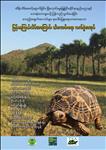
|
Star Tortoise Handbook for Myanmar: Conservation Status, Captive Husbandry, and Reintroduction: Proceedings of a Workshop, Lawkanandar Wildlife Sanctuary, Bagan, Myanmar [Myanmar/Burmese language version]
ထိန္းသိမ္းေစာင္႔ေရွာက္ျခင္းသတ္မွတ္အဆင္႔၊ ၿခံေလွာင္ေမြးျမဴျခင္းဆိုင္ရာနည္းပညာႏွင့္ေဘးမ့ဲေတာမ်ားသို႔ ျပန္လည္လႊတ္ေပး၍ ရွင္သန္က်က္စားႏိုင္ေစရန္ စီစဥ္ေဆာင္ရြက္ျခင္းစသည့္အခ်က္အလက္မ်ား စုေပါင္းျပဳစုေရးသားထားေသာ
ျမန္မာ့ၾကယ္လိပ္အေၾကာင္း သိေကာင္းစရာ လက္စြဲစာအုပ္
ေဒါက္တာကလ်ာ၊ ေဒါက္တာစတီဗင္ပလတ္
ေဒၚေလးေလးခိုင္၊ ေဒၚသင္းသင္းယု၊ ေဒၚစန္းစန္းႏြယ္
ဦးဝင္းကိုကို၊ ေဒၚခင္မ်ဳိးမ်ဳိး၊ ဦးေက်ာ္မိုး၊ ေဒၚမီမီစိုး
ေဒါက္တာတင့္လြင္၊ ေဒါက္တာနန္တာရီကာခ်န္ဆူး ႏွင့္ ေဒါက္တာကြမ္တခ်ာရာပြန္
|
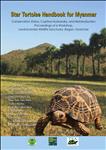
|
Star Tortoise Handbook for Myanmar: Conservation Status, Captive Husbandry, and Reintroduction: Proceedings of a Workshop, Lawkanandar Wildlife Sanctuary, Bagan, Myanmar
|
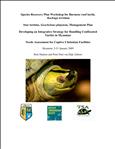
|
Species Recovery Plan Workshop for Burmese Roof Turtle, Kachuga trivittata, Star Tortoise, Geochelone platynota, Mangement Plan, Developing an Integrative Strategy for Handling Confiscated Turtles in Myanmar, and Needs Assessment for Captive Chelonian Facilities: Proceedings of a Workshop 5-21 January 2009, Myanmar.
From 7 – 10 January 2009 the Turtle Survival Alliance (TSA) and Wildlife Conservation Society (WCS), in conjunction with the Myanmar Forestry Department, conducted two workshops in Mandalay. A Species Recovery Plan (SRP) workshop for the Myanmar roof turtle, Kachuga (Batagur) trivittata, was followed by a comprehensive trade workshop entitled Developing an Integrative Strategy for Handling Confiscated Turtles in Myanmar. Around 50 people participated in the four day workshop including the Director General of the Forestry Department and representatives from universities, wildlife sanctuaries and captive chelonian facilities in Myanmar. A multinational contingent including nine representatives from TSA, Conservation International (CI) and WCS also participated. The workshop produced documents on potential release sites for confiscated chelonians, release strategies, prioritized list of species for assurance colonies and special handling, recommended sites for assurance colonies and rescue facilities, captive and wild management strategies for Myanmar roof turtles and captive management of star tortoises. Concurrent with the general workshop, a half day training workshop on identification, husbandry and medical management of chelonians rescued from the trade was conducted at Yadanobon Zoo. A post conference facility assessment tour was conducted 11 – 20 January 2009 with site visits to at least eight sites that either maintain captive chelonians or have the potential to do so.
|

|
A Chelonian Survey of North Zamari Wildlife Sanctuary (Proposed) in the Bago Yoma Hill Range of Myanmar
|
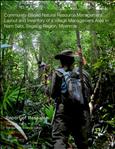
|
Community-Based Natural Resource Management: Layout and Inventory of a Village Management Area in Nam Sabi, Sagaing Region, Myanmar
This document reports the latest best practices in community based natural resource management as implemented during a fieldwork performed from October 18 to November 1 2014 in the village of Nam Sabi in Hkamti District, Sagaing Region and in a small tract of forest located south of the village. The basic objective of the village work was to finalize the list of useful plant species and to select an appropriate location for the establishment of a Village Management Area (VMA); forest work was focused on laying out a baseline for the VMA and sampling two transects to train local crews in the inventory methodology.
|
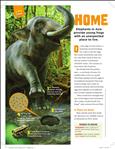
|
Elephants in Asia provide young frogs with an unexpected place to live
|
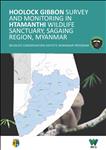
|
Hoolock gibbon survey and monitoring in Htamanthi Wildlife Sanctuary, Sagaing Region, Myanmar
The Hoolock Gibbon survey conducted in Htamanthi Wildlife Sanctuary was
generously funded by the Arcus Foundation. The WCS Myanmar conducted this
research from 2013 to 2017 in close collaboration with the Forest Department,
Nature and Wildlife Conservation Division in particular, as a long-term monitoring
program of Eastern and Western Hoolock gibbons. In Myanmar, deforestation,
habitat loss and hunting have caused Hoolock gibbons to be a threatened species
and extirpated them from much of their historical range. Along with a few surveys
for gibbon conservation, scientific information and overall conservation status of
gibbon species are still poorly understood in Myanmar.
WCS Myanmar working in close collaboration with the Forest Department has
carried out other conservation activities in Htamanthi Wildlife Sanctuary
concurrently with this research. Those activities include SMART patrolling, law
enforcement monitoring, community led natural resource management initiatives
including village consultations and land use zoning, infrastructure development
for effective conservation interventions, and monitoring of land cover changes.
This report thoroughly explains all these project activities over five chapters.
According to these four years of research, it is learnt that, year by year, the gibbon
population trend is steadily increasing while threats to gibbons have significantly
decreased. This is undoubtedly a result from effective patrolling using SMART, the
development of infrastructure and facilities such as ranger stations and mini
training-cum-meeting hall, and empowering community members in natural
resource management around the edges of the sanctuary. Another indicator of
conservation success was, strongly indicated by spatial analysis of Landsat images,
the significant increase of forest cover in both core area and buffer area of the
sanctuary.
This report explains how this long-term intervention for Hoolock Gibbon
conservation within Htamanthi Wildlife Sanctuary has been achieved by the close
collaboration between Forest Department and WCS Myanmar together with the
Arcus Foundation.
|

|
Recent photographic records of Fishing Cat Prionailurus viverrinus in the Ayeyarwady Delta of Myanmar
The distribution of the Fishing Cat Prionailurus viverrinus (Carnivora: Felidae) in Myanmar remains poorly known owing to a paucity of verifiable field records. We here present two recent photographic records that confirm the occurrence of the Fishing Cat in the Ayeyarwady Delta of southern Myanmar. Our photographic records together with other reports and the availability of suitable wetland habitat suggest that the Ayeyarwady Delta is globally important for Fishing Cat conservation. Deforestation, driven largely by agriculture, however, is of concern for the future survival of the Fishing Cat in Myanmar. Additional surveys are warranted to further resolve the distribution of the Fishing Cat in Myanmar.
|

|
Geochelone platynota - giantism (2019)
|

|
Global conservation status of Turtles
|